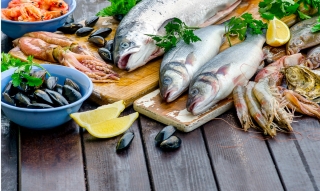
Seafood’s Delicate Balance of Flavors and Textures
02 May 2022Herbs, fruits and cheese elevate without overpowering light and subtle seafood flavors.
By Lisa Parrish, GMC Editor
Feedback & comments: This email address is being protected from spambots. You need JavaScript enabled to view it.
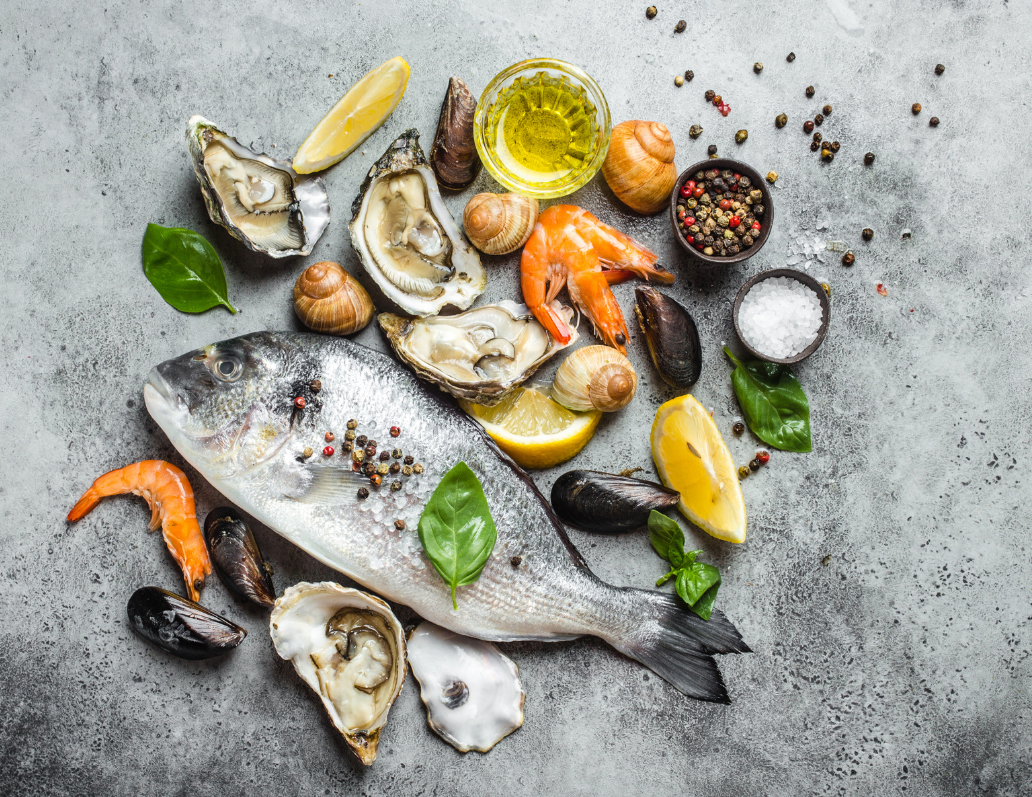 Much of the oceans’ fare takes the form of semi-circle rings of sweet white meat, tender light-colored fillets, or even balls of loosely packed mollusk muscle. From goliath grouper to tiny briny muscles, the ocean’s bounty can be delicate and delicious. Cooking applications require a smart culinary touch that complements without overpowering seafood’s flavors and textures.
Much of the oceans’ fare takes the form of semi-circle rings of sweet white meat, tender light-colored fillets, or even balls of loosely packed mollusk muscle. From goliath grouper to tiny briny muscles, the ocean’s bounty can be delicate and delicious. Cooking applications require a smart culinary touch that complements without overpowering seafood’s flavors and textures.
Herbs
Dried and fresh herbs paired with delicate seafood create delectable dishes. Its simplicity will allow the sea-life protein’s natural flavors to shine through. Try one or more of the following herbs:
- Basil: Pair sweet basil, holy basil, and Thai basil with fish to enhance and complement its natural flavor.
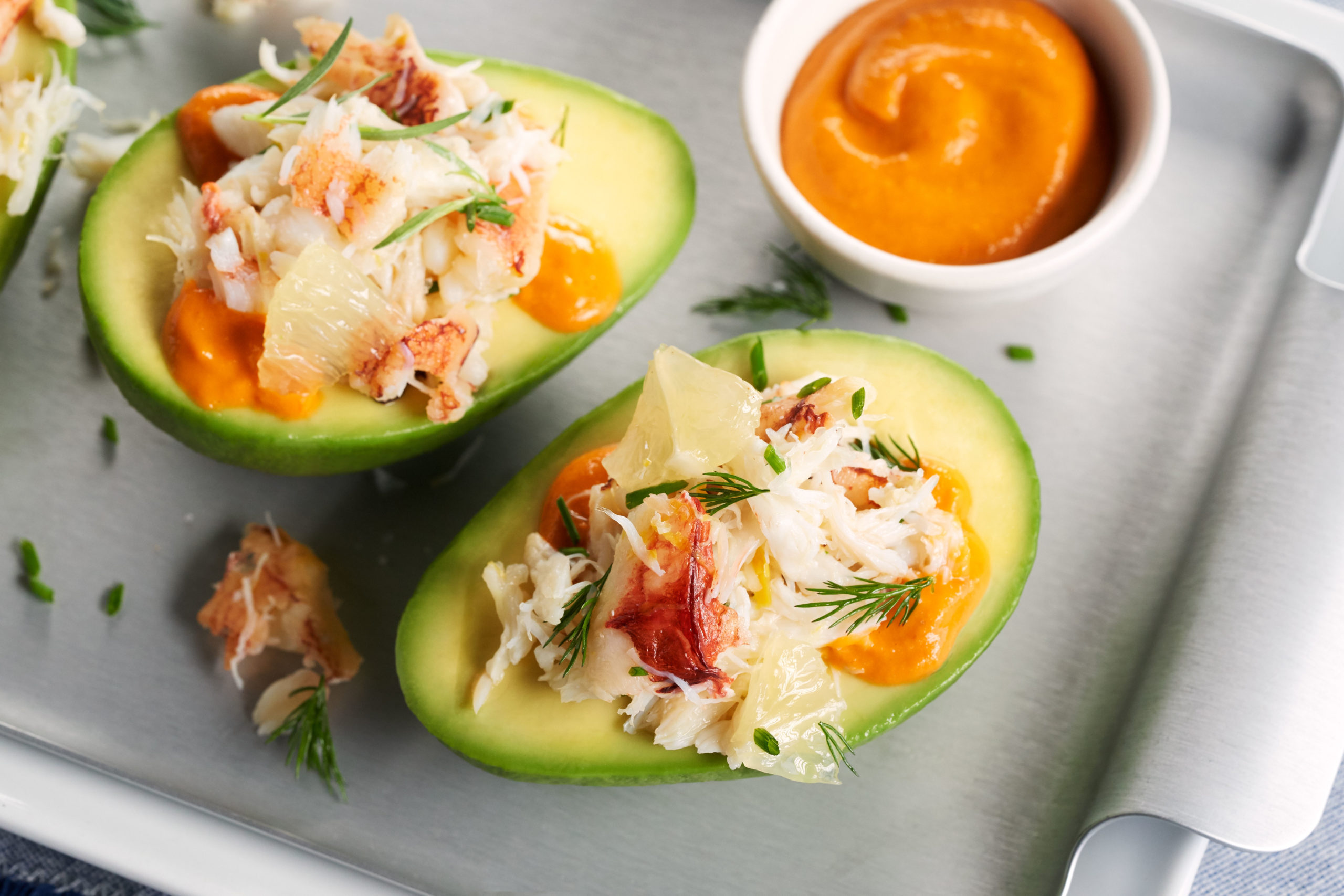
- Bay leaves: Native to Mediterranean regions, bay leaves are a member of the Laurus Nobilis family. Its aroma perfectly pairs with delicate-tasting fish, such as cod or tilapia, and it is used to flavor chowders and fish soups.
- Chives: Dried or fresh, chives add a hint of sharp flavor and color to seafood.
- Dill: Dill, likes chives, adds a delicate flavor punch to seafood and fish recipes.
- Lemon balm: This native Mediterranean herb has a gentle, lemony zing that can brighten fish dishes. Consider a chiffonade leaf cut as a finishing touch for flavor and garnish. Use lemon balm in any recipe calling for lemon flavoring.
- Marjoram: This Mediterranean herb hailing from Cyprus, Turkey, and Greece is a milder and less aggressive form of oregano. It is an herb in the mint family and can add both a sweet and savory flavor to seafood applications.
- Mint: Used in moderation, mint cuts through rich flavors while adding tang. Use sparingly as it can overpower seafood.
- Parsley: This juicy, green-tasting herb supports delicate fish and seafood flavors well.
- Tarragon: A staple in French cooking, tarragon adds a light, delicate flavor to fish dishes. Flavors include licorice and anise.
- Thyme: Although thyme perfectly pairs with seafood applications, use lightly as the flavor becomes more intense the longer the herb cooks.
- Rosemary: Fragrant and versatile rosemary can be used in seafood dishes both fresh or dried, but fresh rosemary has a more citrus flavor.
- Sage: Pairs well with fish and adds an aromatic, earthy flavor. As with rosemary, go lightly when seasoning with sage.
Some fish, such as salmon and shark, are bolder-tasting meatier fish than many of the other popular restaurant varieties. These fish also pair well with herbs, however it is required to choose the best herbs that both complement and temper the pronounced fishy flavor.
- Fennel: With its light and feathery leaves, fennel has an anise flavor. It is part of the carrot family.
- Sage: Sage has a strong herbal aroma and earthy flavor.
- Coriander seeds: A versatile spice, coriander is mildly sweet with a lemon flavor. It is often paired with cumin.
Fruit
Juicy and sweet fruit complement both the texture and taste of a variety of seafood dishes. And, of course, citrus fruits such as lemons, limes and oranges, brighten and counter the briny flavors with acid.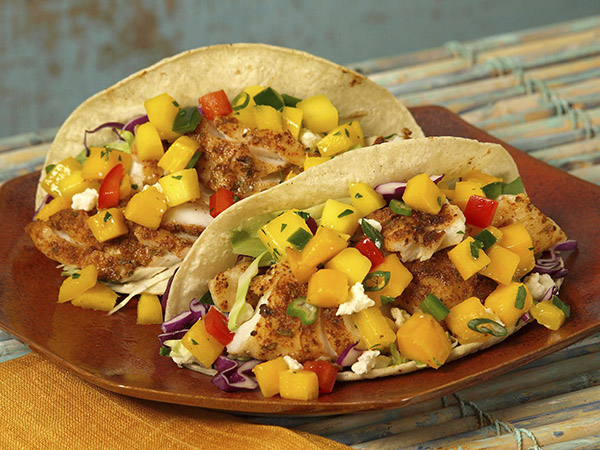
Salsas are an interesting way to build flavors and add color without dominating neutral-colored seafood. From Baja Fish Tacos with Mango Salsa to Cajun Salmon with Mango Pineapple Avocado Salsa, mangos bring a bright, tropical flair to many fish applications.
Another tropical take on fish is ceviche. Cooked by citrus acids, ceviche is thought to have come from the South American ancient Incan civilization nearly 2,000 years ago. Adding fruit to ceviche balances acidity, adds texture and can also offer a counterpoint to spices with heat. Mangos provide balance in Mango Tuna Ceviche.
Chefs can opt to build unique seafood flavors by adding an Italian sweet-tart agrodolce sauce to grilled fish. (Agro means sour and dolce means sweet.) The acidity of the sauce cuts through fatty meats, such as salmon, and the sticky nature adds to an application’s texture.
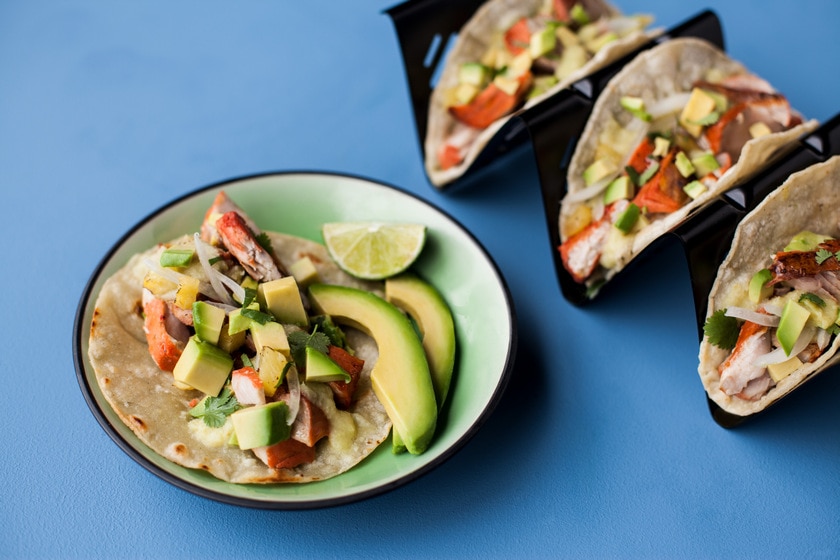 Another fruit that pairs well with shellfish without taking over is creamy avocado. Avocados bring out the sweetness in seafood and its smooth texture pairs well with a firm-texture fish. Also, the healthy monosaturated fats found in avocados elevate a seafood application’s nutritional profile. From a simple crab avocado and aioli toast to tempura California avocado with crab salad and sriracha mayonnaise, avocados together with seafood offer heart-healthy and delicious options.
Another fruit that pairs well with shellfish without taking over is creamy avocado. Avocados bring out the sweetness in seafood and its smooth texture pairs well with a firm-texture fish. Also, the healthy monosaturated fats found in avocados elevate a seafood application’s nutritional profile. From a simple crab avocado and aioli toast to tempura California avocado with crab salad and sriracha mayonnaise, avocados together with seafood offer heart-healthy and delicious options.
Cheese
Cheese is not the first ingredient most chefs consider for seafood pairing ideas. Its assertive flavors and thick texture can overwhelm seafood’s delicacies. However, just like not all seafood is the same, neither are cheeses created equally. In fact, there are some cheese varieties that pair well with seafood and fish applications. Still have doubts? Consider a breakfast staple of cream cheese and lox bagels.
Even though classically trained Italian chefs may say “never shall cheese and seafood meet,” there are endless possibilities. Using simplicity as the rule, a chef may choose to melt a mild cheese such as a smooth buttery sheep’s milk cheese like Brigante and add shallots, tarragon and chervil to create a sauce that tops tilapia. This is an example where each element of a dish elevates the other.
Briny muscles in a flavorful broth are delicious and very familiar. Adding a more assertive blue cheese, such as France’s oldest fourme d’Ambert, gives a dish both creaminess and earthiness that plays with the muscles’ salty flavors.
Again, simplicity with layering flavor is the key to seafood and cheese. There are times when a seabass with fresh chevre, fresh herbs and a finishing acid are just the trick.
Photos courtesy of the National Mango Board and California Avocado Commission.

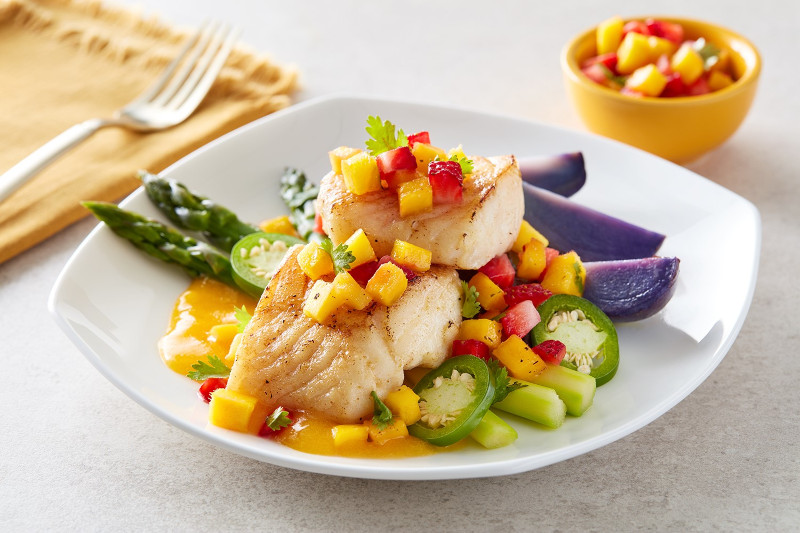 Click here to view a handy guide listing 24 herbs, their tastes, a pairing guide and tips on cooking and storing.
Click here to view a handy guide listing 24 herbs, their tastes, a pairing guide and tips on cooking and storing.